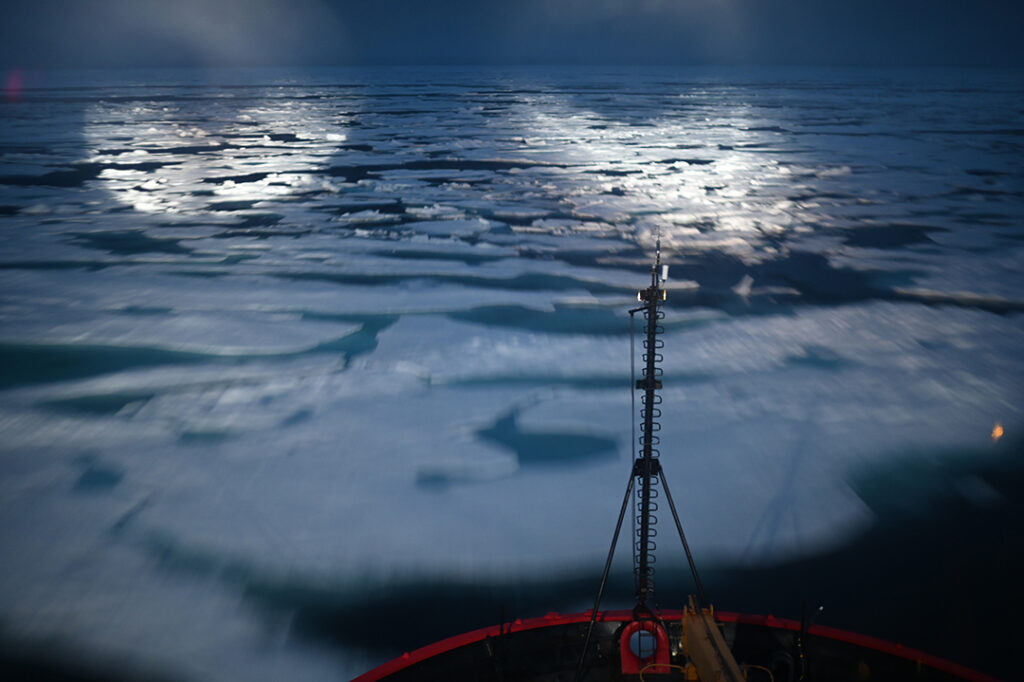THE WATCH STAFF
In yet another example of how the Arctic is changing, the region’s “Last Ice” developed a massive hole.
The hole, known as a polynya, was north of Ellesmere Island, Canada’s northern-most island, and just west of Greenland. The area, known as Last Ice, is considered to have the oldest and thickest Arctic ice.
Researchers at the University of Toronto-Mississauga in Canada discovered that the polynya formed May 14, 2020, according to an October 19, 2021, story in the USA Today newspaper. The polynya expanded to about 62 miles long and 18 miles wide before eventually closing May 26, 2020. The researchers used satellite data and found the same opening also occurred in 1988 and 2004, the newspaper said.
The researchers published their findings in the journal Geophysical Research Letters in August.
“No one had seen a polynya in this area before. North of Ellesmere Island it’s hard to move the ice around or melt it just because it’s thick, and there’s quite a bit of it,” Kent Moore, the lead author of the study, said in a statement.
Polynyas can form in two ways: either the water underneath is too warm for the ice, or wind blows the ice away, according to the National Ice and Snow Data Center. The reason for all three polynya openings in the Last Ice was attributed to extreme wind, which needed to be strong enough to move ice more than 16-feet thick, according to USA Today.
An October 16 story on the website Mashable noted that even though Arctic sea ice has starkly declined in the past 40 years, scientists thought the Last Ice was largely resistant to melting as the planet warmed.
A thawing Arctic also has national security implications.
The U.S. Department of Homeland Security (DHS) noted in its Strategic Framework for Addressing Climate Change released October 21 that as the Arctic ice melts, it opens the Northwest Passage and sets up increased strategic competition for natural resources and frees sea lanes for commercial shipping. DHS includes the U.S. Coast Guard (USCG).
(Pictured: Spotlights illuminate the ice ahead of the USCG Cutter Healy while underway September 1, 2021. No suitable ice was found during the Healy’s Arctic journey off Alaska and Canada, so a traditional “ice liberty,” where the crew gets to disembark on a thick ice floe for recreation, was canceled, the Seattle Times newspaper reported.)
David Babb, a sea-ice researcher at the University of Manitoba in Canada, said a polynya in the region is unusual because the wind is not as strong as the wind near the coast, possibly showing that ice where the hole opened is not as resilient or is getting thinner, according to USA Today.
“The formation of a polynya in the area is really interesting. It’s sort of like a crack in the shield of this solid ice cover that typically exists in that area. So that this is happening is also really, really highlighting how the Arctic is changing,” Babb told the newspaper.
Moore said that polynyas can happen more frequently as the ice gets thinner, but if global temperatures continue to rise, they might not be able to close.
IMAGE CREDIT: CHIEF MATT MASASCHI/U.S. COAST GUARD

